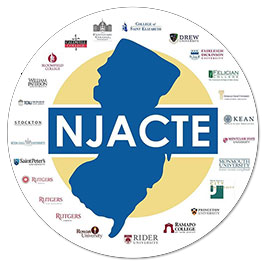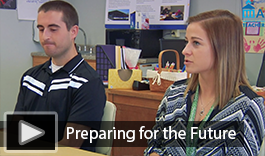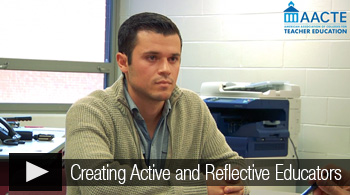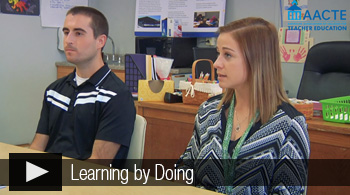31 Oct2016
By John F. Snyder
The views expressed in this article do not necessarily reflect the views of AACTE.
For future teachers, the job outlook is bright. For school hiring personnel, the challenge of finding enough qualified educators for their vacancies is daunting.
The growing mismatch between teacher supply and demand was documented strongly in a comprehensive report published by the Learning Policy Institute last month. One of the key data sources cited in the study is the American Association for Employment in Education (AAEE) “Educator Supply and Demand Report 2014-15,” which now has a new edition available—and the shortage situation has not improved.
24 Oct2016
By Linda McKee

Registration is now open for AACTE’s first Quality Support Workshop, to be held April 24-26 in Fort Worth, Texas. Bring your team for 2 days of hands-on, expert-facilitated learning and planning around performance assessment, continuous improvement, and quality assurance.
The event is the first in a new series of regional workshops announced last month, offered through the AACTE Quality Support Center. A core component of AACTE’s mission is to support institutions’ continuous improvement efforts. With learning outcomes focused on topics of national or local interest, these workshops will provide accessible, targeted support for teams of faculty and staff.
21 Sep2016
By Ana Maria Schuhmann

Thanks to an AACTE State Chapter Support Grant, the New Jersey Association of Colleges for Teacher Education (NJACTE) recently completed a statewide advocacy campaign to debunk myths about teacher preparation and teacher quality.
In spring 2015, NJACTE submitted a successful proposal to AACTE for funds to expand the capacity, leadership, and relationship with the PK–12 community and the state Department of Education by collaborating on strategies to debunk myths about teacher preparation and teacher quality.
04 Aug2016
By Kathryn Opatick and Amanda Lester
 AACTE is excited to announce a call for new submissions to the Innovations Inventory! Online submissions will be accepted now through September 23.
AACTE is excited to announce a call for new submissions to the Innovations Inventory! Online submissions will be accepted now through September 23.
The Innovations Inventory is an online repository of successful programs and initiatives that are improving educator preparation at AACTE member institutions. By documenting successful innovations, the inventory aims to inspire and support advances in educator preparation based on proven approaches that will benefit the field broadly. Members and their PK-12 partners are invited to submit examples of unique or new approaches to educator preparation programs or initiatives that address critical issues in educator preparation and show evidence of positive impact.
In this year’s call for submissions, we are pleased to offer two pathways through which faculty and partners can share their innovative programs:
02 Aug2016
By Nadene Davidson
 The Advisory Council of State Representatives (ACSR) is pleased to announce a new consensus document, the State Policy Statements to Enhance Educator Preparation, developed by AACTE state chapter leaders and members to support the advocacy work of educator preparation providers (EPPs).
The Advisory Council of State Representatives (ACSR) is pleased to announce a new consensus document, the State Policy Statements to Enhance Educator Preparation, developed by AACTE state chapter leaders and members to support the advocacy work of educator preparation providers (EPPs).
ACSR leaders representing more than 1,100 EPPs participated in a collaborative process to develop the document, agreeing on key statements under the following three priority areas:
26 Jul2016
By Yupin Bae and Michelle Kotek
Editor’s note: This is the last blog in our series exploring data on program entry and exit requirements from the 2014 federal collection mandated by Title II of the Higher Education Act. The data include 1,497 providers of “traditional” programs based in institutions of higher education (IHEs), 472 providers of IHE-based alternative programs, and 201 providers of non-IHE-based alternative programs.
Despite the questionable validity of using students’ grade-point averages (GPAs) to predict their future success on the job as classroom teachers, GPA is one of the most common requirements for admission to and graduation from many colleges and professional schools.
25 Jul2016
By Mia Hines, Dominique Battle-Lawson, Ann Traynor, Mark Kohan, Rene Roselle and Dorothea Anagnostopoulos
The views expressed in this post do not necessarily reflect the views of AACTE.
Like other programs, our teacher preparation program at the University of Connecticut Neag School of Education has long struggled to recruit as many students of color as we’d like. That’s why we joined AACTE’s networked improvement community (NIC) in 2014 to collaborate with other institutions on strategies to bring more Black and Latino men into our programs. Already, we have nearly doubled the percentage of students of color in our program, going from roughly 12% of students to 20% of our entering cohort this fall.
27 Jun2016
By Abigail Mercadante
Last month, the National Assessment Governing Board released its first-ever Nation’s Report Card for Technology and Engineering Literacy via a webcast from the Michigan Science Center. The event presented not only test results but also perspectives from educators and from a panel of students who had participated in the interactive, digital-based assessment, which was administered to more than 20,000 eighth-graders nationwide in 2014.
The National Assessment of Educational Progress (NAEP), commonly known as the “nation’s report card,” was developed in 1969 to measure how students in America compare with students of other countries in the areas of reading and math. Other subjects have been added over the years, and 2014 marked the first assessment targeting technology and engineering skills. The new test is also the first fully computer-based NAEP assessment.
27 Jun2016
By Rodrick Lucero
 AACTE’s Research-to-Practice Spotlight Series on the Patton College of Education at Ohio University is coming to a close. We’ve enjoyed sharing the successful partnership work of the college and its network of professional development schools (PDSs) in a series of videos and blogs over the past 2 months, and now we’ve posted one final video – a longer clip with some great insights from the college’s leaders about their clinical practice model.
AACTE’s Research-to-Practice Spotlight Series on the Patton College of Education at Ohio University is coming to a close. We’ve enjoyed sharing the successful partnership work of the college and its network of professional development schools (PDSs) in a series of videos and blogs over the past 2 months, and now we’ve posted one final video – a longer clip with some great insights from the college’s leaders about their clinical practice model.
21 Jun2016
By Yupin Bae and Michelle Kotek
Editor’s note: This is the fourth of six blogs exploring data on program entry and exit requirements from the latest available (2014) federal collection mandated by Title II of the Higher Education Act. The data include 1,497 providers of “traditional” programs based in institutions of higher education (IHEs), 472 providers of IHE-based alternative programs, and 201 providers of non-IHE-based alternative programs.
In this article, we look at the frequency of various program completion requirements among three types of providers at the undergraduate and graduate levels. (See our recent blogs about the number and frequency of various entry criteria and the number of exit criteria used by these three categories of providers.)
13 Jun2016
By Yupin Bae and Michelle Kotek
Editor’s note: This is the third of six blogs exploring data on program entry and exit requirements from the latest available (2014) federal collection mandated by Title II of the Higher Education Act. The data include 1,497 providers of “traditional” programs based in institutions of higher education (IHEs), 472 providers of IHE-based alternative programs, and 201 providers of non-IHE-based alternative programs.
Although critics sometimes claim that educator preparation programs have few or no requirements for admission and completion, federal Title II data say otherwise. In this article, we explore the number of exit requirements reported by different types of providers at the undergraduate and graduate levels. (See our recent blogs about the number and frequency of various entry requirements.)
As noted in the first blog of our series, the Title II survey provides 15 options for providers to indicate their entry and exit criteria:
13 Jun2016
By Francisco X. Gaytán
When considering the trends in college degree attainment among students of color, there appears to be a tale of two genders, and something must be done about it. In April, I was part of a group of educators from across the country that convened in New Jersey at William Paterson University’s College of Education to consider the issue. The attendees have been working together over the past 2 years as members of AACTE’s Black and Hispanic/Latino Male Initiative Networked Improved Community (NIC), drawing upon the collective expertise of the member institutions to increase representation of Black and Hispanic/Latino males in the teacher workforce.
13 Jun2016
By Melvin Bogard
A new set of brief videos in AACTE’s Research-to-Practice Spotlight Series focuses on operationalizing clinical practice through the award-winning partnerships of Ohio University’s Patton College of Education (see this article introducing the series, this overview of the first three videos, and this summary of the next four videos). Today’s article highlights messages from the next three segments, which feature faculty and administrators from the partner schools as well as Patton College students.



23 May2016
By Yupin Bae and Michelle Kotek
Editor’s note: This is the second of six blog articles exploring data on program entry and exit requirements from the latest available (2014) federal collection mandated by Title II of the Higher Education Act. The data include 1,497 providers of “traditional” programs based in institutions of higher education (IHEs), 472 providers of IHE-based alternative programs, and 201 providers of non-IHE-based alternative programs.
This is the second of six blog articles that explore federal data on educator preparation program entry and exit requirements. Taking a different angle from the last blog, this article looks at admissions requirements by frequency to identify which ones are most common.
The annual Title II collection asks providers about 15 common admission requirements, including the applicant’s subject area, transcript, overall grade-point average (GPA), content GPA, professional GPA, credits, scores on ACT/SAT/basic-skills tests, essays, interviews, recommendations, fingerprint and background checks, and “other.”
17 May2016
By Katrina Sheffield




A new set of brief videos in AACTE’s Research-to-Practice Spotlight Series focuses on operationalizing clinical practice through the award-winning partnerships of Ohio University’s Patton College of Education (see this article introducing the series and this overview of the first three videos). Today’s article highlights messages from the next four segments, which feature students and leaders from the college as well as from its partner schools.
The Patton College of Education at Ohio University and its partner schools nurture future teachers with extensive and hands-on experience in classrooms. Teacher candidates play an active role from early in their college years, actively participating and working closely with veteran educators to develop their own proficiency.








 AACTE is excited to announce a call for new submissions to the
AACTE is excited to announce a call for new submissions to the 







